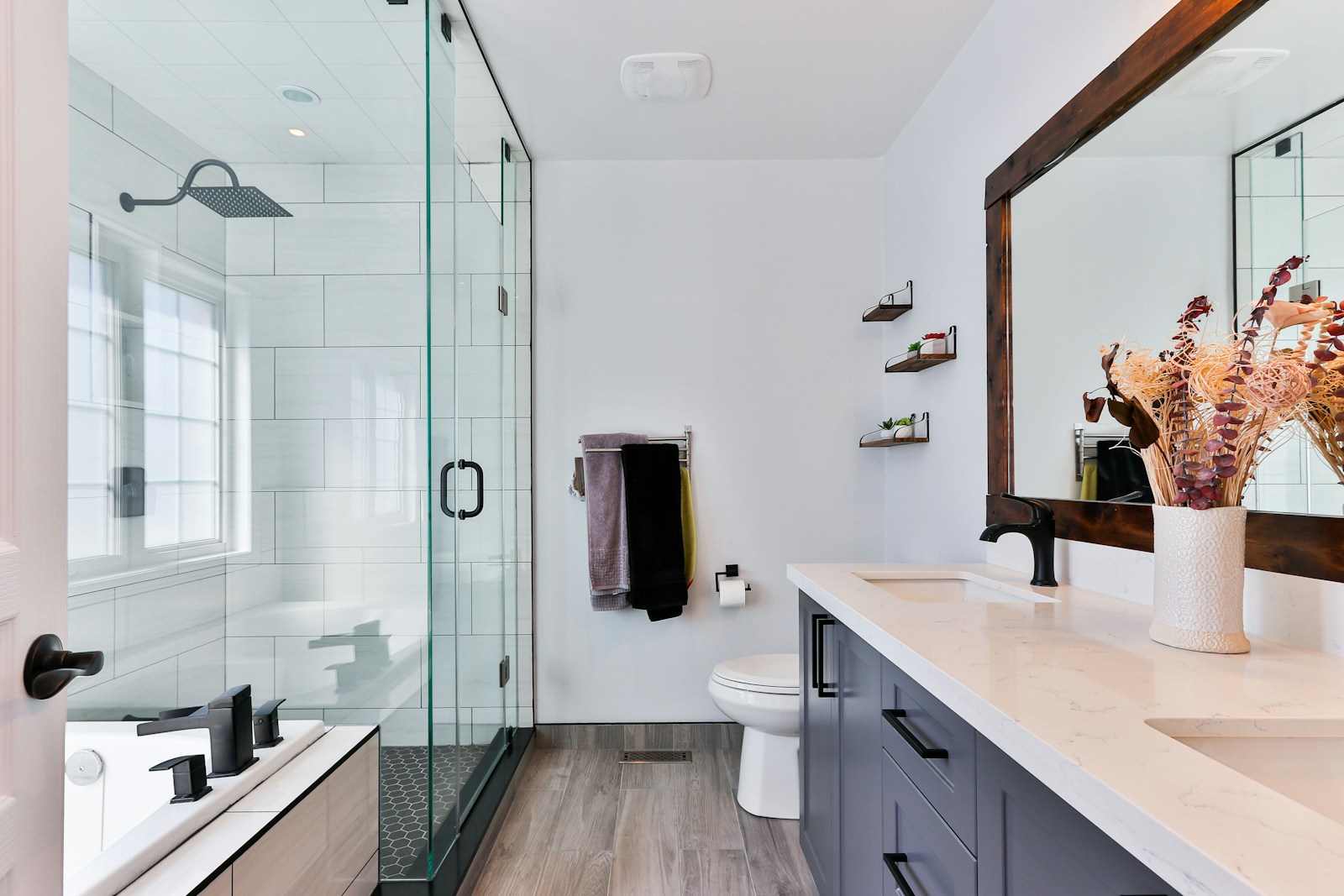Transforming your bathroom into a plastic-free sanctuary might seem daunting at first glance. After all, this small but essential space in our homes typically contains numerous plastic products – from shampoo bottles and toothbrushes to shower curtains and toilet brushes. However, making the switch to sustainable alternatives is not only beneficial for the environment but can also create a more aesthetically pleasing and healthier bathroom space.
This comprehensive guide will walk you through practical, affordable steps to gradually eliminate plastic from your bathroom routine, helping you reduce your environmental footprint while maintaining (and often improving) your personal care standards.
Understanding the Plastic Problem in Our Bathrooms
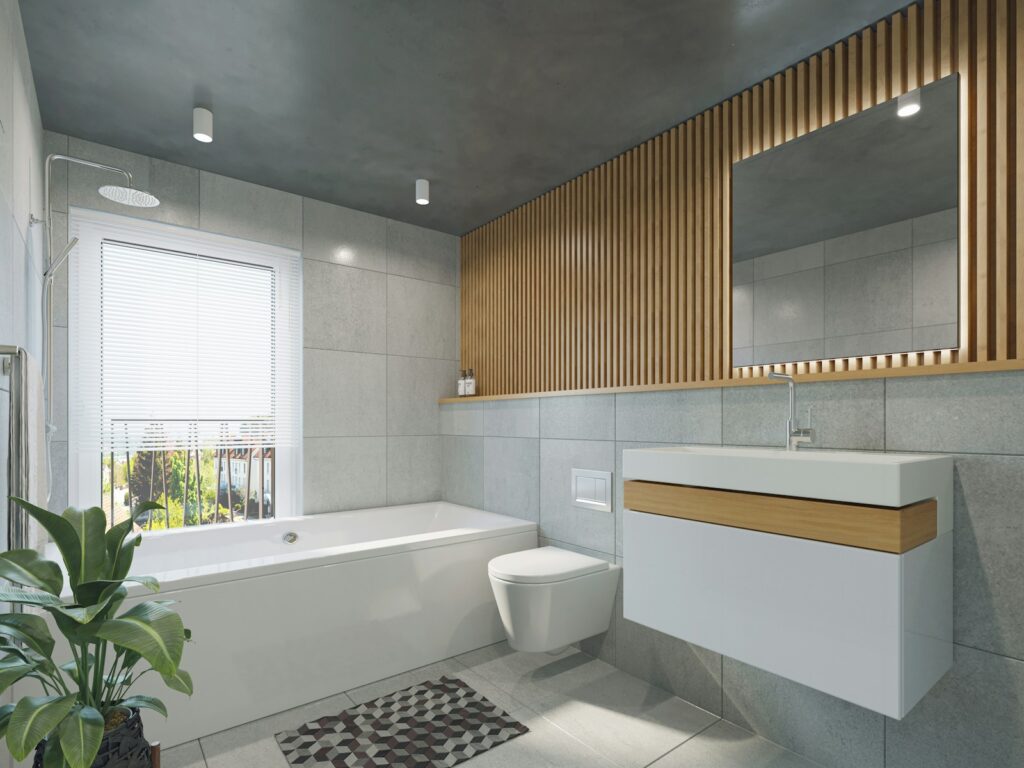
The average bathroom contains hundreds of plastic items, many of which are single-use or have short lifespans before ending up in landfills or oceans. Plastic toothbrushes, disposable razors, cotton swab sticks, and countless bottles of personal care products contribute significantly to the 300 million tons of plastic waste generated globally each year. What makes bathroom plastic particularly problematic is that much of it isn’t recyclable due to mixed materials, small sizes that fall through recycling machinery, or contamination from product residues.
Even more concerning is that many bathroom products contain microplastics – tiny plastic particles that wash down our drains and eventually make their way into waterways and the food chain. Taking steps to eliminate these plastics from your bathroom routine represents a meaningful contribution to addressing this widespread environmental issue.
Setting Realistic Goals for Your Plastic-Free Journey
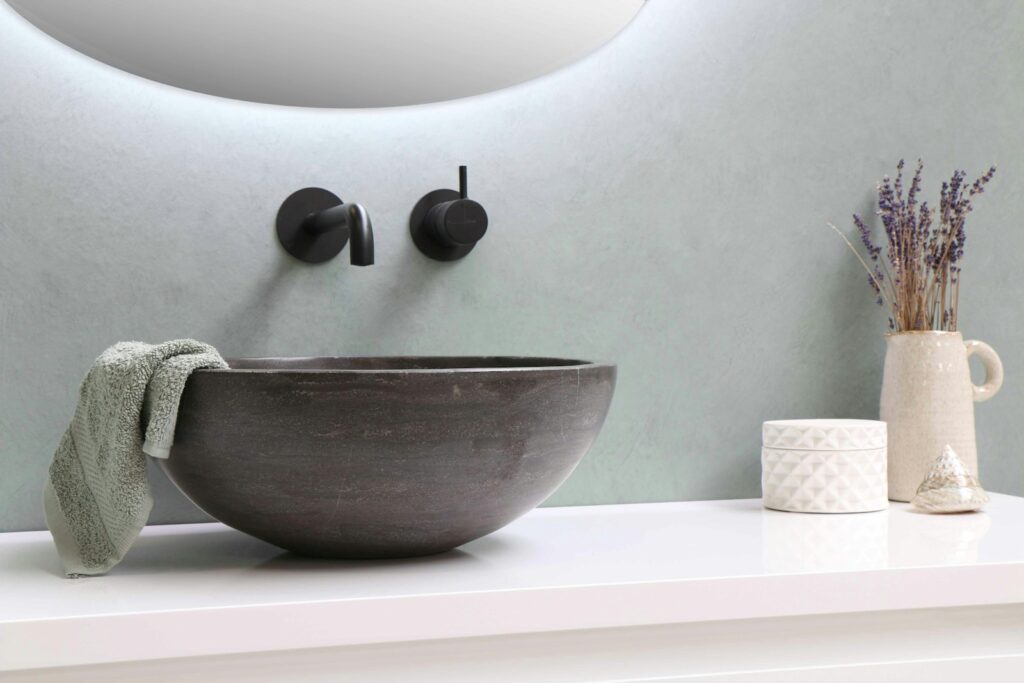
Transitioning to a plastic-free bathroom works best as a gradual process rather than an overnight transformation. Begin by taking inventory of all the plastic items in your bathroom and categorizing them by how frequently they need replacement. Focus first on replacing single-use plastics and items that need frequent replacement, such as cotton swabs, dental floss, and shower products. Next, tackle longer-lasting items like toothbrushes and razors when they naturally reach the end of their useful life.
Remember that perfection isn’t the goal – reducing plastic use significantly is more sustainable than attempting to eliminate it entirely and becoming discouraged. Set a timeline that works for your budget and lifestyle, perhaps replacing one or two items per month, and celebrate each plastic item you successfully swap out for a sustainable alternative.
Plastic-Free Oral Care Alternatives
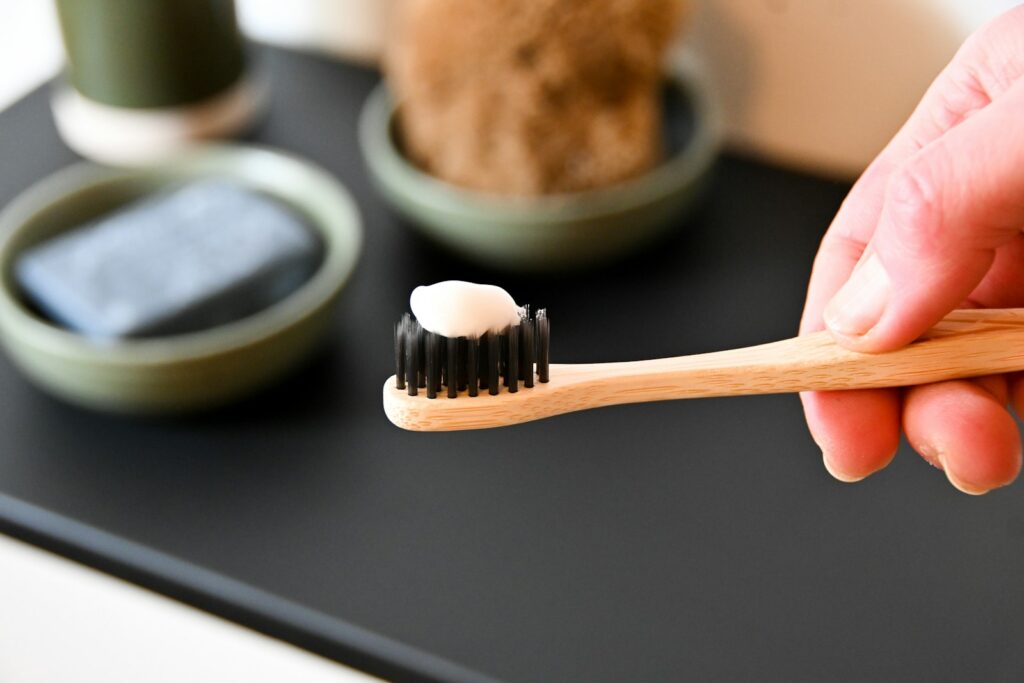
Conventional oral care routines are surprisingly plastic-intensive, but numerous effective alternatives exist. Bamboo toothbrushes with natural bristles provide the same cleaning power as plastic versions while being biodegradable – just remove the bristles before composting the handle. For toothpaste, consider plastic-free options like tooth tablets, powder in glass jars, or paste in metal tubes, many of which skip unnecessary ingredients found in conventional toothpaste.
Dental floss can be replaced with plastic-free versions made from silk or bamboo fiber that come in refillable glass containers. For mouthwash, look for tablet or powder options that dissolve in water, eliminating the need for plastic bottles entirely. These alternatives not only reduce plastic waste but often contain fewer synthetic chemicals, making them a healthier choice for both your body and the planet.
Sustainable Hair Care Solutions
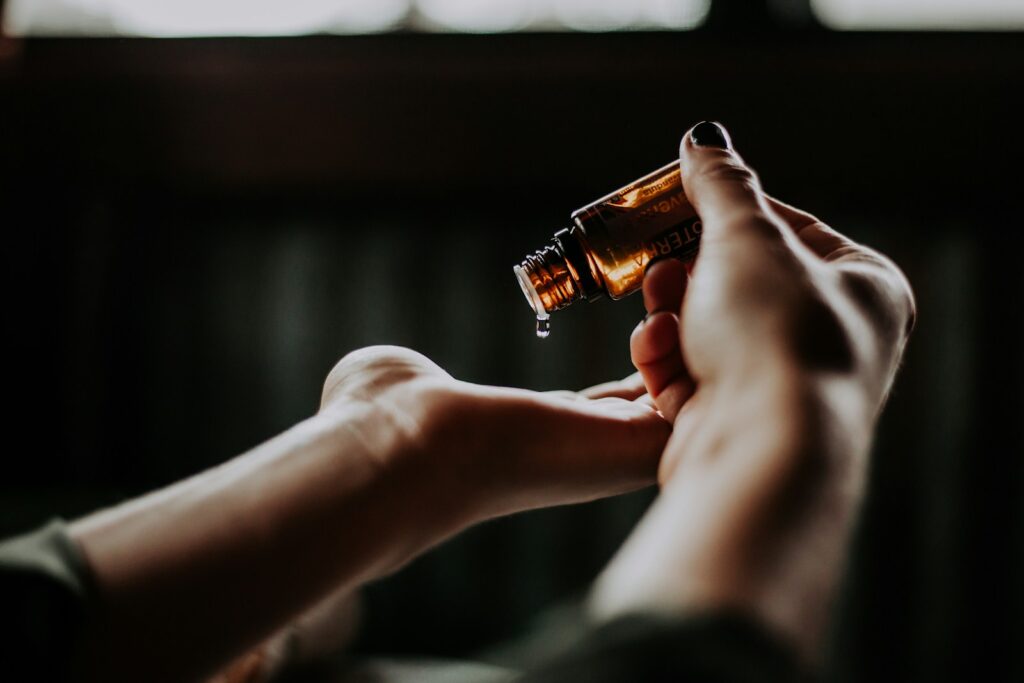
Hair care represents one of the bathroom’s biggest sources of plastic waste, with the average person going through numerous shampoo and conditioner bottles annually. Solid shampoo and conditioner bars offer an excellent alternative, typically lasting much longer than their liquid counterparts while eliminating plastic packaging entirely. These concentrated bars work effectively for most hair types and come in various formulations for specific hair needs. Another option is refillable hair care from bulk stores or subscription services that use returnable containers.
For those who prefer to make their own products, simple ingredients like apple cider vinegar (as a rinse) and coconut oil (as a deep conditioner) can be purchased in glass containers and incorporated into your routine. Wooden combs and brushes with natural bristles complete the plastic-free hair care setup, offering durability that plastic alternatives can’t match.
Body Washing Without Plastic
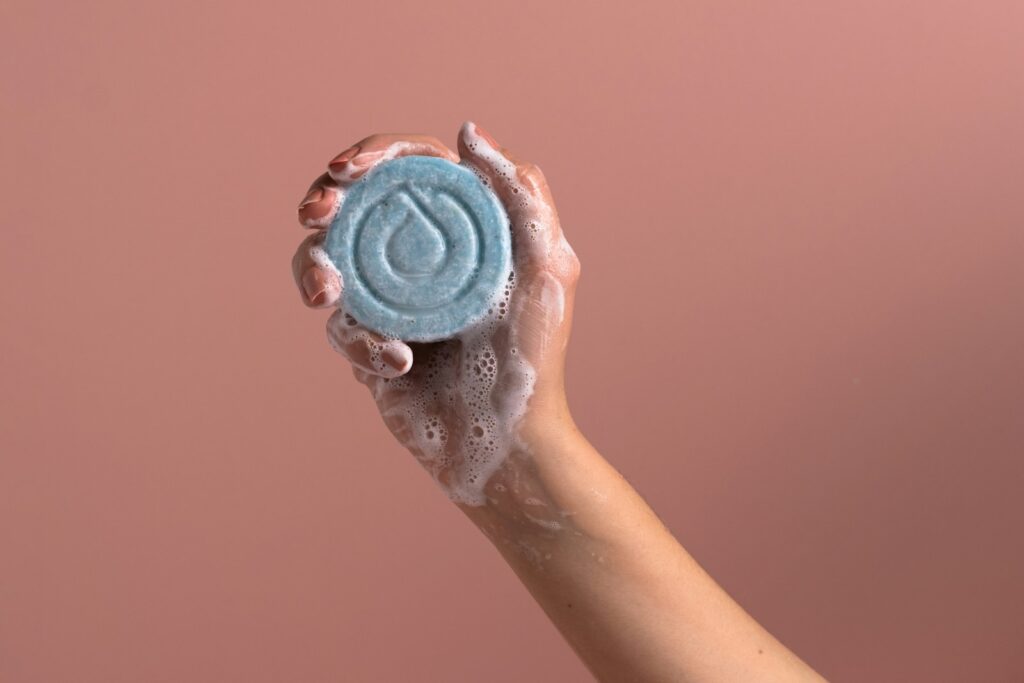
Body wash in plastic bottles can be easily replaced with traditional bar soap, which typically comes in minimal paper packaging or no packaging at all. Look for cold-processed soaps made with natural ingredients, which tend to be gentler on skin while providing effective cleansing. For exfoliation, natural loofahs (actual dried gourds), sea sponges, or washcloths eliminate the need for plastic mesh poufs that shed microplastics with every use. Body scrubs can be purchased in glass jars or easily made at home using ingredients like coffee grounds, sugar, salt, and oils.
Traditional soap dishes made from bamboo, ceramic, or other natural materials help your bar soap last longer by allowing it to dry between uses, addressing the common complaint that bar soaps become mushy. These simple swaps not only eliminate plastic but often provide a more luxurious bathing experience with higher-quality ingredients.
Sustainable Shaving Practices
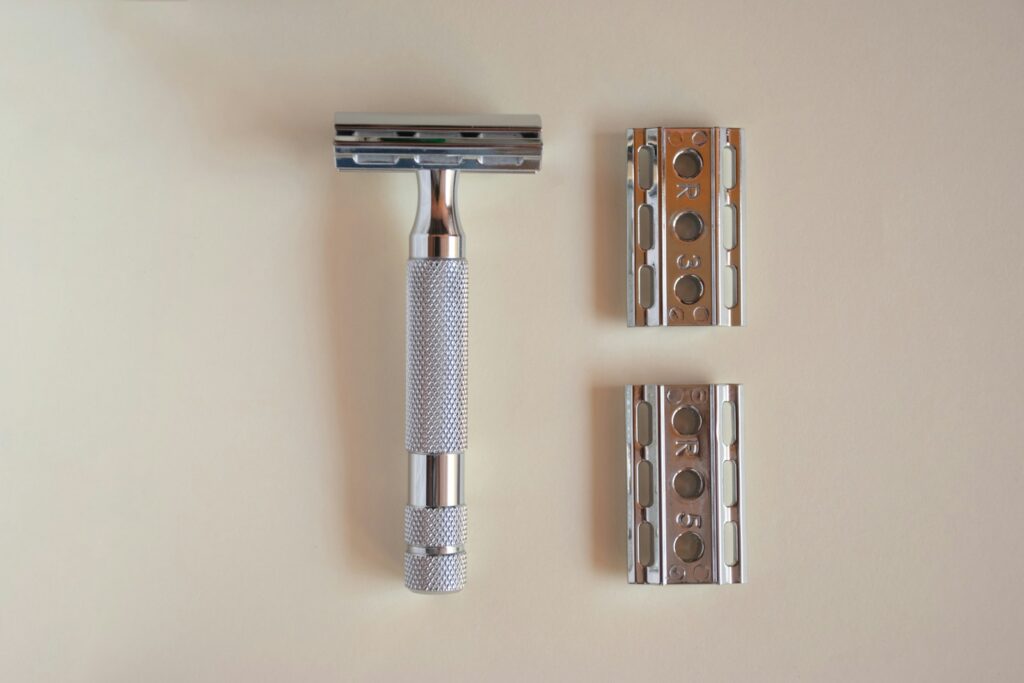
Disposable razors and cartridges generate enormous amounts of plastic waste that’s virtually impossible to recycle due to the mixed materials. Safety razors (also called double-edge razors) offer a classic alternative that’s experiencing a renaissance – these metal razors use simple, recyclable metal blades that cost pennies compared to plastic cartridges. While the initial investment in a quality safety razor might be $20-50, the long-term savings are substantial, and the razor itself can last for decades with proper care.
For those not ready to make the switch to safety razors, consider brands that offer razors with replaceable heads and handles made from recycled plastic. Shaving soap in bars or creams in metal tubes or glass jars replaces canned shaving foam, providing a richer lather that many find gives a superior shave while eliminating aerosol cans and plastic containers from the equation.
Eco Friendly Feminine Hygiene Products
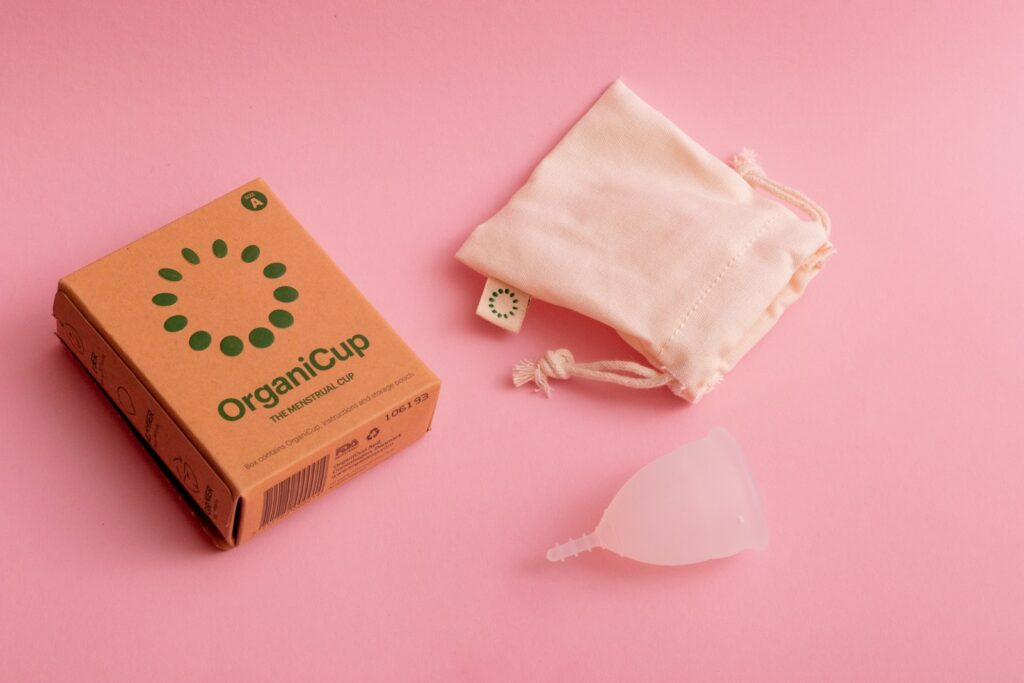
Conventional menstrual products generate significant plastic waste through packaging, applicators, and the products themselves, which often contain plastic components. Reusable options like menstrual cups made from medical-grade silicone offer a long-lasting alternative that can be used for years, making them both environmentally and economically advantageous. Period underwear provides leak-proof protection without any waste and comes in a variety of styles and absorbency levels to suit different needs and flows.
For those who prefer disposable options, organic cotton tampons and pads without plastic applicators or wrappers break down naturally after disposal, unlike their conventional counterparts. Reusable cloth pads made from natural fibers provide another sustainable option that can be washed and reused for years, eliminating the ongoing waste stream of disposable products. Many women report that these alternatives are not only better for the environment but also more comfortable and cause fewer irritations than conventional products.
Plastic-Free Bathroom Cleaning
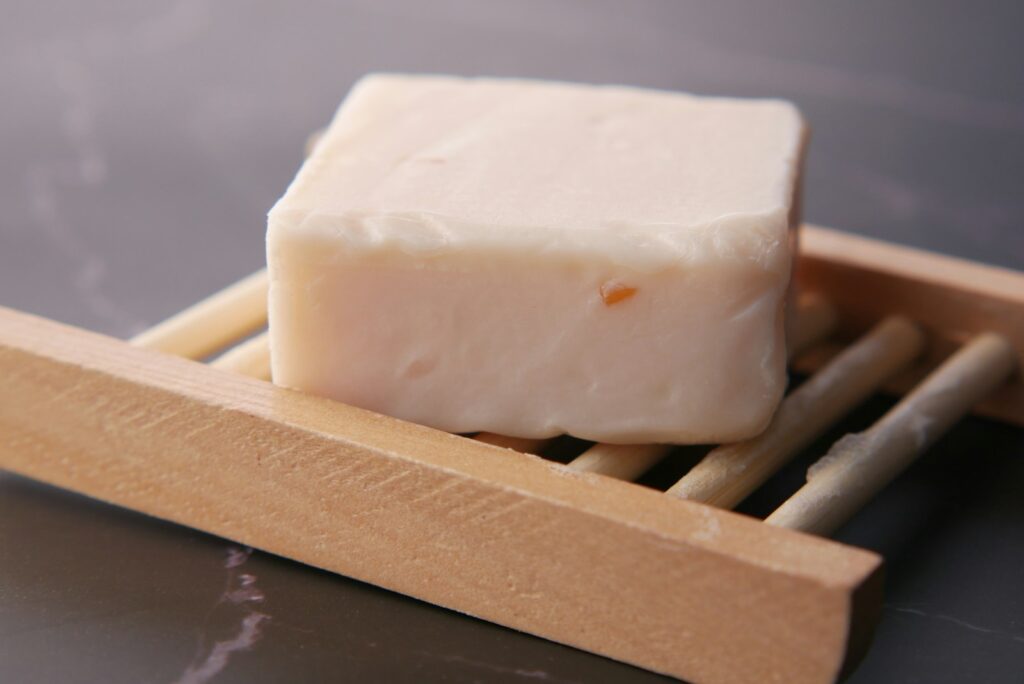
Bathroom cleaning supplies typically come in plastic spray bottles with harsh chemicals, but effective plastic-free alternatives exist for every cleaning need. Baking soda serves as an excellent scrubbing agent for tubs, sinks, and tiles, while white vinegar in glass bottles works as a disinfectant and descaler for shower heads and faucets. Castile soap in liquid form (available in bulk or large glass bottles) can be diluted to create all-purpose cleaners for most bathroom surfaces. For tools, choose brushes with wooden handles and natural bristles, and cotton rags instead of disposable wipes or paper towels.
Many zero-waste shops now offer refillable cleaning concentrates that you can mix with water in glass spray bottles, eliminating the need to purchase new plastic containers. These natural cleaning methods not only reduce plastic waste but also improve indoor air quality by eliminating harsh chemical fumes that conventional cleaners release.
Tackling Bathroom Textiles and Fixtures
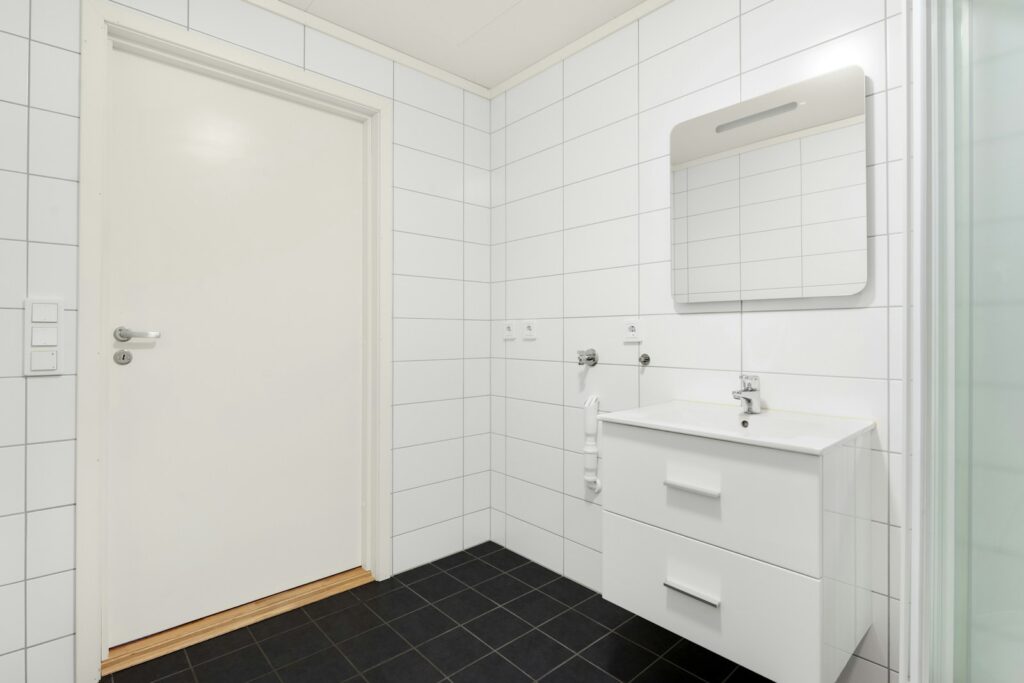
Many bathroom textiles and fixtures contain hidden plastics that can be replaced with natural alternatives. Vinyl shower curtains, which off-gas harmful chemicals and eventually end up in landfills, can be replaced with hemp, linen, or cotton curtains that can be washed and will eventually biodegrade. Look for bath mats made from wood, bamboo, or natural fibers instead of synthetic materials, providing better durability and moisture management. Even toilet brushes can go plastic-free with options featuring wooden handles and plant-based bristles that clean effectively while being more biodegradable at the end of their life.
For towels, choose 100% organic cotton, hemp, or linen versions that will last longer than synthetic blends and won’t release microplastics in the wash. When replacing larger bathroom fixtures, consider materials like ceramic, glass, and metal that will last for decades and can often be recycled at the end of their useful life.
Sustainable Storage Solutions
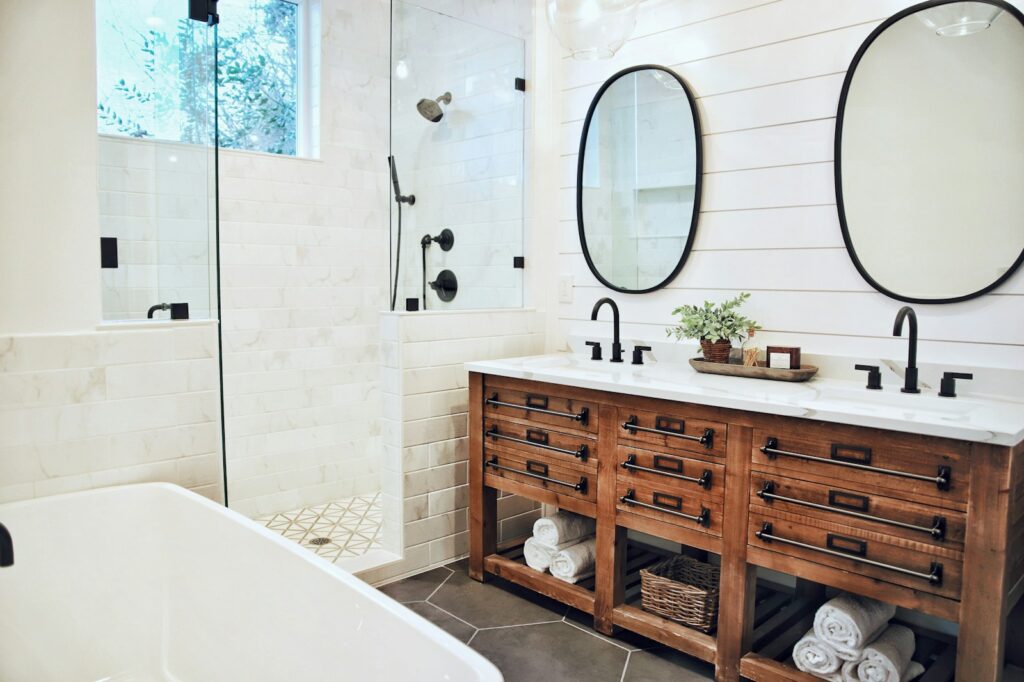
Bathroom organization typically relies heavily on plastic containers, but numerous attractive alternatives exist that perform equally well while adding natural beauty to your space. Glass jars with metal lids provide transparent storage for items like cotton balls, bath salts, and homemade beauty products, while being completely recyclable or reusable. Baskets made from bamboo, seagrass, or other natural fibers offer breathable storage for towels and toilet paper while adding texture and warmth to the bathroom aesthetic. For shower storage, consider wooden caddies or shelves that resist moisture better than their plastic counterparts and can be composted at the end of their life rather than lingering in landfills.
Repurposing containers from other parts of your home – such as ceramic planters or metal tins – provides cost-effective storage while keeping perfectly good items in use instead of purchasing new ones. These natural storage solutions not only eliminate plastic but often look more intentional and designed than standard plastic organizers.
Navigating Medications and First Aid
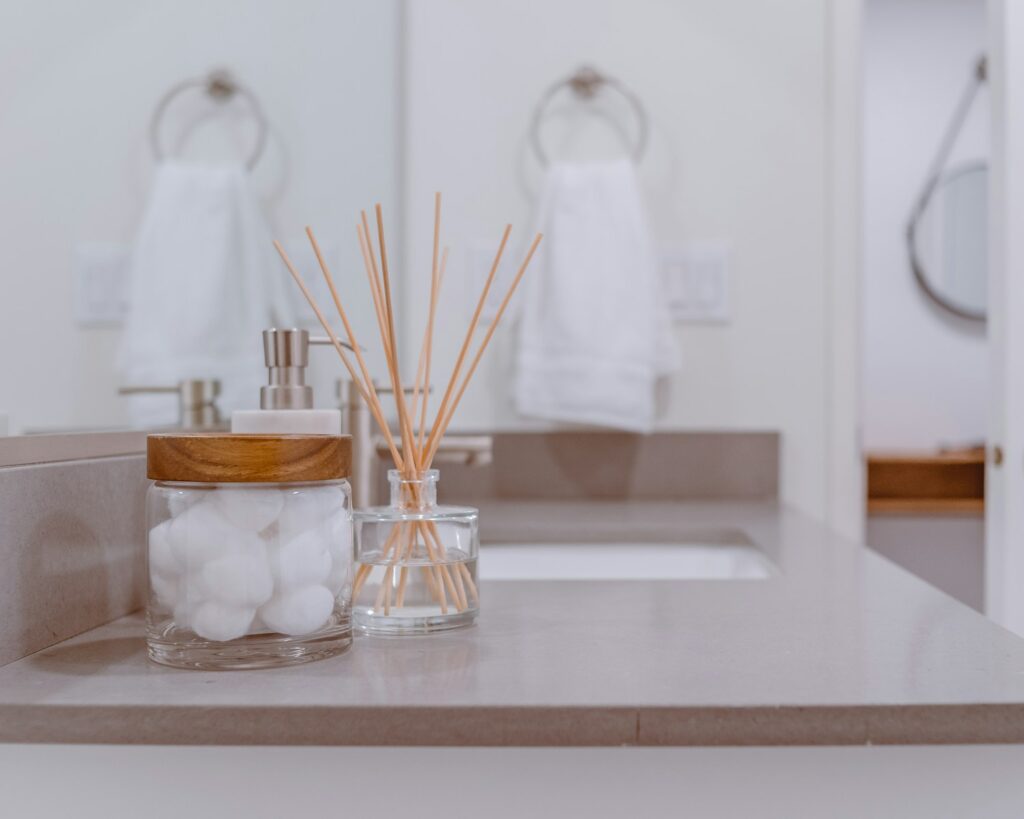
Medical necessities present one of the most challenging areas for plastic reduction, as health and safety must remain the priority. While you shouldn’t compromise on necessary medications that come in plastic packaging, you can make sustainable choices for basic first aid supplies. Choose bandages made from bamboo or organic cotton that come in cardboard packaging rather than plastic-wrapped synthetic options. For tweezers, nail clippers, and scissors, invest in quality metal versions that will last a lifetime rather than disposable plastic tools.
Medications often come in plastic bottles due to safety regulations, but some pharmacies now offer take-back programs for empty prescription containers, allowing them to be properly recycled or reused. For over-the-counter remedies, look for options in glass bottles when available, and consider natural alternatives for minor issues that often come with less packaging, such as using honey for coughs or tea tree oil (in glass bottles) for minor skin irritations.
Budget-Friendly Approaches to Going Plastic-Free
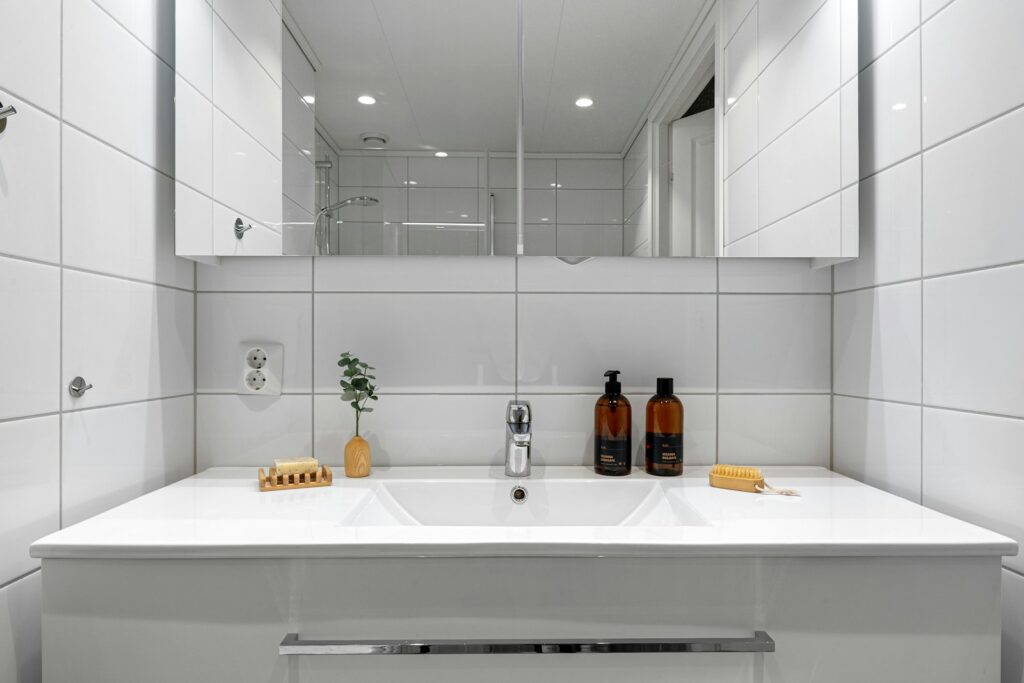
Transitioning to a plastic-free bathroom doesn’t have to strain your finances if you approach it strategically. Begin by using up what you currently have rather than discarding functional plastic items, replacing them with sustainable alternatives only when they’re depleted or worn out. Many plastic-free options actually save money in the long run – a safety razor might cost more upfront but saves hundreds of dollars on replacement cartridges over time, while shampoo bars typically last longer than bottled versions. For budget-conscious shoppers, DIY alternatives using simple ingredients like baking soda, vinegar, and essential oils can replace numerous specialized products at a fraction of the cost.
Consider joining forces with friends or family members to purchase sustainable items in bulk and share the cost, or organize swap events where you can exchange plastic-free products you’ve tried but didn’t work for you. Remember that imperfect progress is still progress – even replacing a few key items makes a meaningful difference to your environmental impact.
Overcoming Common Challenges
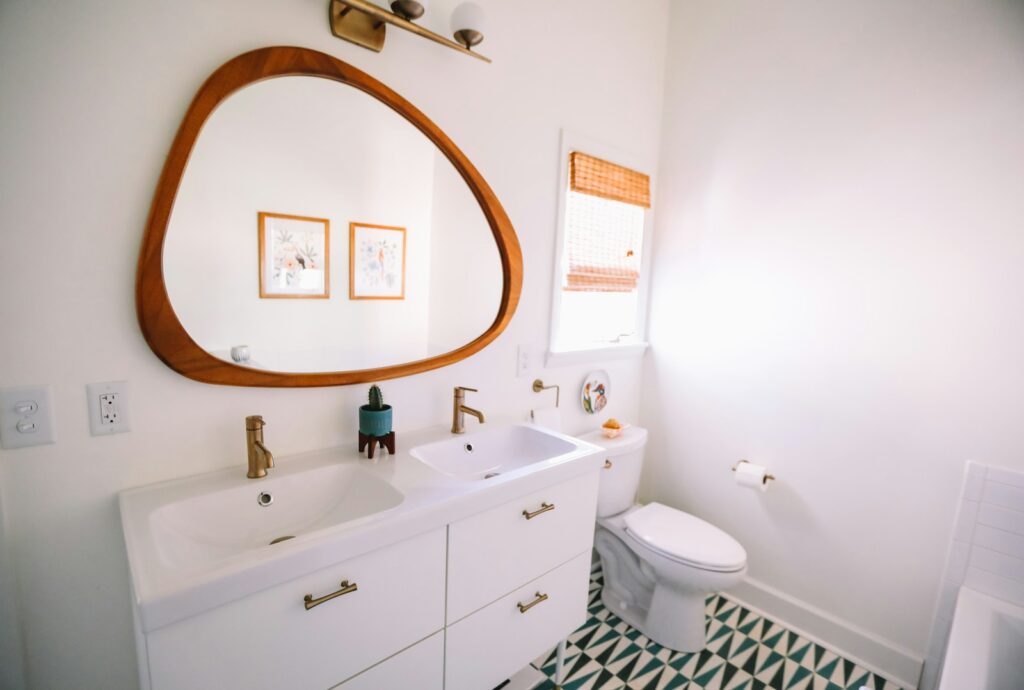
The journey to a plastic-free bathroom inevitably comes with obstacles, but anticipating common challenges helps overcome them. Many people struggle with the effectiveness of natural products after years of using conventional versions – this often requires an adjustment period as your body adapts to different formulations, or trying several brands before finding one that works for your specific needs. Household members who are resistant to changes can be gradually brought on board by focusing first on products that perform identically to their plastic counterparts, like bamboo toothbrushes or bar soaps that clean just as effectively as liquid versions.
Travel presents another common challenge, which can be addressed with reusable travel containers made from silicone or metal, solid personal care products that don’t count as liquids in airport security, and compact versions of your plastic-free essentials. Remember that plastic-free living isn’t about perfection but consistent effort – even experienced practitioners occasionally encounter situations where plastic is unavoidable, but the overall reduction still makes a significant environmental impact.
Creating New Habits and Routines

Successfully maintaining a plastic-free bathroom requires developing new habits that eventually become second nature. Start by keeping a small reminder list on your bathroom mirror or inside a cabinet door until your new routines become automatic. Establish regular maintenance practices for your sustainable products, such as allowing wooden items to dry completely between uses and periodically oiling wooden handles to prevent cracking. Create simple systems for tasks that might otherwise be inconvenient, like keeping a small laundry bag in the bathroom for cloth wipes or reusable cotton rounds.
Integrate resupply of plastic-free essentials into your regular shopping routine so you’re never tempted to purchase plastic alternatives in a pinch. Consider scheduling a quarterly bathroom assessment to identify areas where plastic might have crept back in or where new plastic-free alternatives have become available. With time, these practices become habits that require little conscious effort while maintaining your plastic-free bathroom environment.
From Waste to Wellness Transforming Your Bathroom Sustainably

Creating a plastic-free bathroom is a journey rather than a destination – a process of continuous improvement that significantly reduces your environmental impact while often enhancing your personal care experience. By tackling one product category at a time, being patient with the transition, and focusing on progress rather than perfection, you can transform this high-waste area of your home into a showcase of sustainable living. Beyond the environmental benefits, many people discover unexpected advantages to going plastic-free: natural products that are gentler on skin and hair, beautiful bathroom aesthetics featuring natural materials, and substantial long-term cost savings from durable, reusable items.
Your plastic-free bathroom journey contributes to the broader movement toward more conscious consumption, sending a message to manufacturers that consumers value sustainability. Whether you implement all the suggestions in this guide or just a few that resonate with you, each plastic item eliminated represents a positive choice for the planet’s future.

